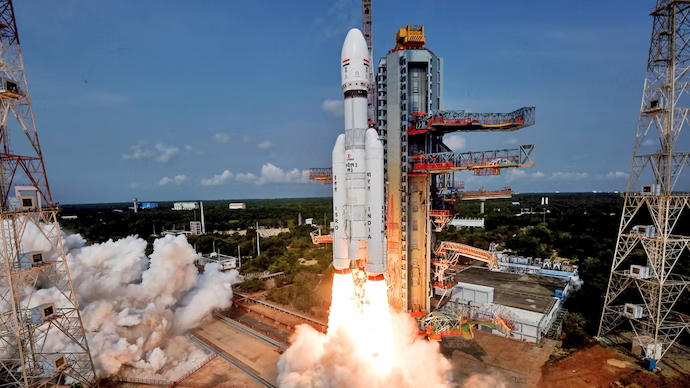From Chandrayaan 2 to Chandrayaan 3: What We Can Expect from India’s Next Lunar Mission
The excitement is palpable as India gears up for its next lunar mission, Chandrayaan 3. After the partial success of Chandrayaan 2 last year, the Indian Space Research Organisation (ISRO) is leaving no stone unturned to ensure that the next mission is a complete success. From designing a new lander and rover to conducting extensive tests and simulations, ISRO is taking all necessary measures to achieve its goal of landing on the moon’s south pole. With Chandrayaan 3, India aims to further its knowledge of the moon’s surface and its resources, as well as pave the way for future manned missions. In this article, we will take a closer look at what we can expect from India’s next lunar mission, the challenges that lie ahead, and the potential benefits that Chandrayaan 3 could bring to India and the world. So, sit back, buckle up and let’s explore the fascinating world of space exploration!
Overview of Chandrayaan 2 mission
Chandrayaan 2 was India’s second lunar mission, launched on 22 July 2019 from the Satish Dhawan Space Centre in Sriharikota. The mission consisted of an orbiter, a lander named Vikram, and a rover named Pragyan. The main objective of the mission was to study the lunar surface, map its topography, and investigate the presence of water and other minerals.
Challenges and setbacks faced by Chandrayaan 2
Despite the meticulous planning and preparation, the mission encountered a major setback when the lander lost contact with the ground station during its descent on 7 September 2019. This resulted in the mission being declared a partial success, as the orbiter continued to function and send valuable data back to Earth. The cause of the failure was later attributed to a software glitch in the lander’s guidance system.
India’s plans for Chandrayaan 3
ISRO wasted no time in getting back to the drawing board to plan for the next lunar mission. In November 2019, the government approved the proposal for Chandrayaan 3, with a budget of Rs. 6.15 billion ($82 million). The mission was originally slated for launch in late 2020, but due to the COVID-19 pandemic, it has been postponed to 2022.
Objectives of Chandrayaan 3 mission
The primary objective of Chandrayaan 3 is to land on the moon’s south pole, which is considered to be a challenging feat due to the rugged terrain and lack of sunlight. The mission will consist of a lander and a rover, similar to Chandrayaan 2, but with some key improvements. The lander will be equipped with a new guidance system to prevent a repeat of the previous failure, and the rover will have more advanced instruments to study the lunar surface.
Technology advancements in Chandrayaan 3
One of the major technological advancements in Chandrayaan 3 is the use of a high-thrust engine for the launch vehicle. This will enable a direct injection of the spacecraft into the lunar orbit, without the need for an intermediate orbit. The lander and rover will also have improved thermal protection, to withstand the extreme temperatures on the moon’s surface. In addition, the rover will have a drilling mechanism to collect samples from a depth of up to 2 meters.
Launch and landing process of Chandrayaan 3
The launch of Chandrayaan 3 will take place from the Satish Dhawan Space Centre, using the Geosynchronous Satellite Launch Vehicle Mark III (GSLV Mk III) rocket. The spacecraft will enter the lunar orbit and perform a soft landing on the moon’s surface, using a powered descent mechanism. The landing site for the mission is yet to be finalized, but it is expected to be in the vicinity of the south pole.
Comparison between Chandrayaan 2 and Chandrayaan 3
While Chandrayaan 3 shares some similarities with its predecessor, there are also some key differences. For instance, Chandrayaan 3 will not have an orbiter, as the orbiter from Chandrayaan 2 is still functioning and sending data back to Earth. This will save costs and allow for more focus on the lander and rover. Additionally, the landing site for Chandrayaan 3 is expected to be closer to the south pole, which will allow for more detailed exploration of the region.
Future scope of lunar missions for India
Chandrayaan 3 is just the beginning of India’s ambitious plans for lunar exploration. ISRO has already announced plans for another lunar mission in 2024, which will be a joint mission with Japan. The mission, called Lunar Polar Exploration (LUPEX), will aim to study the water resources on the moon and explore the possibility of using them for future manned missions. In the long term, ISRO has set its sights on establishing a permanent base on the moon, which could serve as a launchpad for future missions to Mars and beyond.
Conclusion
India’s space program has come a long way since its inception in the 1960s. From launching its first satellite in 1975 to sending a spacecraft to Mars in 2014, ISRO has achieved several milestones in space exploration. The partial success of Chandrayaan 2 may have been a setback, but it has not dampened the spirits of the scientists and engineers at ISRO. With Chandrayaan 3, India is once again aiming for the stars, and this time, it hopes to reach even further than before. The mission holds great promise not just for India, but for the world, as it seeks to unlock the mysteries of the moon and pave the way for future space exploration.
CyberTecz is Available on Play Store, Download Now & Get an Inside Look into the App: Click here
Abroad Jobs Opportunities for Professionals & Freshers, Apply Now: Click here
Men’s & Women’s Tips, Grooming, Relationship Tips, Health & Fitness Guide, Motivation: Click here
Get Daily Software, Hardware, Gadgets, Linux distro releases & Security News: Click here
Career Advice, Recruitment Process & Pattern, Career Advice, Resume Writing: Click here
MNC Companies Mock Test with Aptitude and Coding Assessment: Click here










































